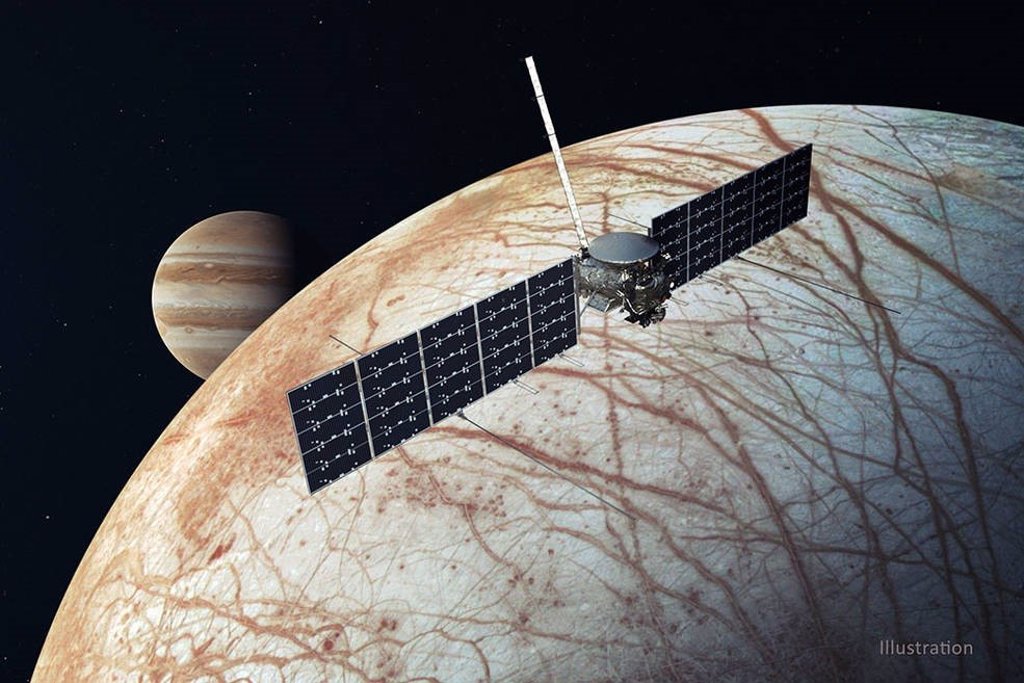NASA advances a mission to the moon Europa

Madrid, April 5. (Europe Press) –
Europa Clipper, NASA’s next major mission to the outer solar system, You have passed an important milestone by completing a critical design review.
This spacecraft will make multiple flights to Jupiter’s moon, Europa To investigate the livability of this ocean world.
During the review, experts examined the detailed design of the spacecraft to ensure it was ready for completion. The task can now complete instrument manufacturing and testing, Moving towards assembling and testing the spacecraft and its cargo of advanced scientific tools.
With an inner global ocean twice the size of Earth’s oceans combined, Jupiter’s moon Europa has the potential to provide conditions suitable for life. But the freezing temperatures and the constant bombardment of Jupiter’s radiation surface make it difficult to explore.: Mission engineers and scientists must design a spacecraft strong enough to withstand radiation but sensitive enough to collect the science needed to explore the Europa environment.
The orbiter Europa Clipper will orbit Jupiter in an elliptical path, approaching the moon with each flight for detailed exploration. Science includes collecting measurements of the inner ocean, mapping surface composition and geology, and searching for plumes of water vapor that might rise from the ice crust. NASA reports in a statement.
Spacecraft development is progressing well, according to an extensive review recently completed by NASA. The Critical Design Review covered in depth in the details of the plans for all scientific instruments, from cameras to antennas, and flight subsystems, including propulsion, power, avionics, and flight computers.
In addition to the detailed plans, the mission built prototypes and engineering models to test how well the hardware and engineering subsystems were performing. Then there is the flying equipment itself. Much of it is already under construction. Individual engineering devices and systems have passed their design reviews over the past year and a half.
The Europa Clipper’s most striking features, and signature elements, are taking shape. About 3 meters in diameter, the high gain disc antenna, That will receive orders from the ground and transmit scientific data, in its final stage of compilation.
By far the most visible device of the Europa Clipper, the massive solar panels that will dot deep space like wings, are also under construction. The spaceship, with its fully spread panels, is wider than a basketball court and measures 30.5 meters. The panels will cover an area of more than 90 square meters.
They will contact the propulsion unit that the Johns Hopkins Applied Physics Laboratory (APL) is building in Laurel, Maryland. The core of the propulsion unit consists of Two stacked cylinders together about 3 meters high It contains propulsion tanks and 16 rocket engines that will power the Europa Clipper as soon as it leaves Earth’s atmosphere.
APL is also building a telecommunications unit for radio communication with the ground and a radiation monitoring device to measure the size of the electron blast hitting the spacecraft during more than 40 flights in Europa.
In the Jet Propulsion Laboratory, many elements of the flight system are being built, including a protective dome that shields important electronic devices from the intense radiation of Jupiter. The Jet Propulsion Laboratory also builds and tests the avionics subsystem, which includes the flight computer, switching power and distribution devices, the flight software needed to perform the scientific mission, and the ground system tools needed for the mission’s flight. Ground support equipment that will be used to assemble and test large parts of the Europa Clipper flying apparatus is also being built.
As this work progresses, project leaders continue planning mission knowledge. The spacecraft’s scientific instruments will measure the depth of the ice crust, measure the depth, thickness and salinity of the inner ocean, take color pictures of the surface geology in detail, and analyze potential plumes.
Scientists are especially interested in what the moon’s surface is made of. Evidence indicates that the material detected there mixed in the ice crust and may have come from the ocean below. The Europa Clipper will also investigate the moon’s gravitational field, which scientists will tell more about How the moon folds when Jupiter pulls it and how this action might warm the interior.
The entire set of instruments will go through extensive testing upon arrival at JPL in 2021. Early 2022 will see the start of assembly, testing and launch operations.

“Future teen idol. Hardcore twitter trailblazer. Infuriatingly humble travel evangelist.”




:quality(85)/cloudfront-us-east-1.images.arcpublishing.com/infobae/BNGH73UCKQAZSQPCODUWO2BE5Y.jpg)





